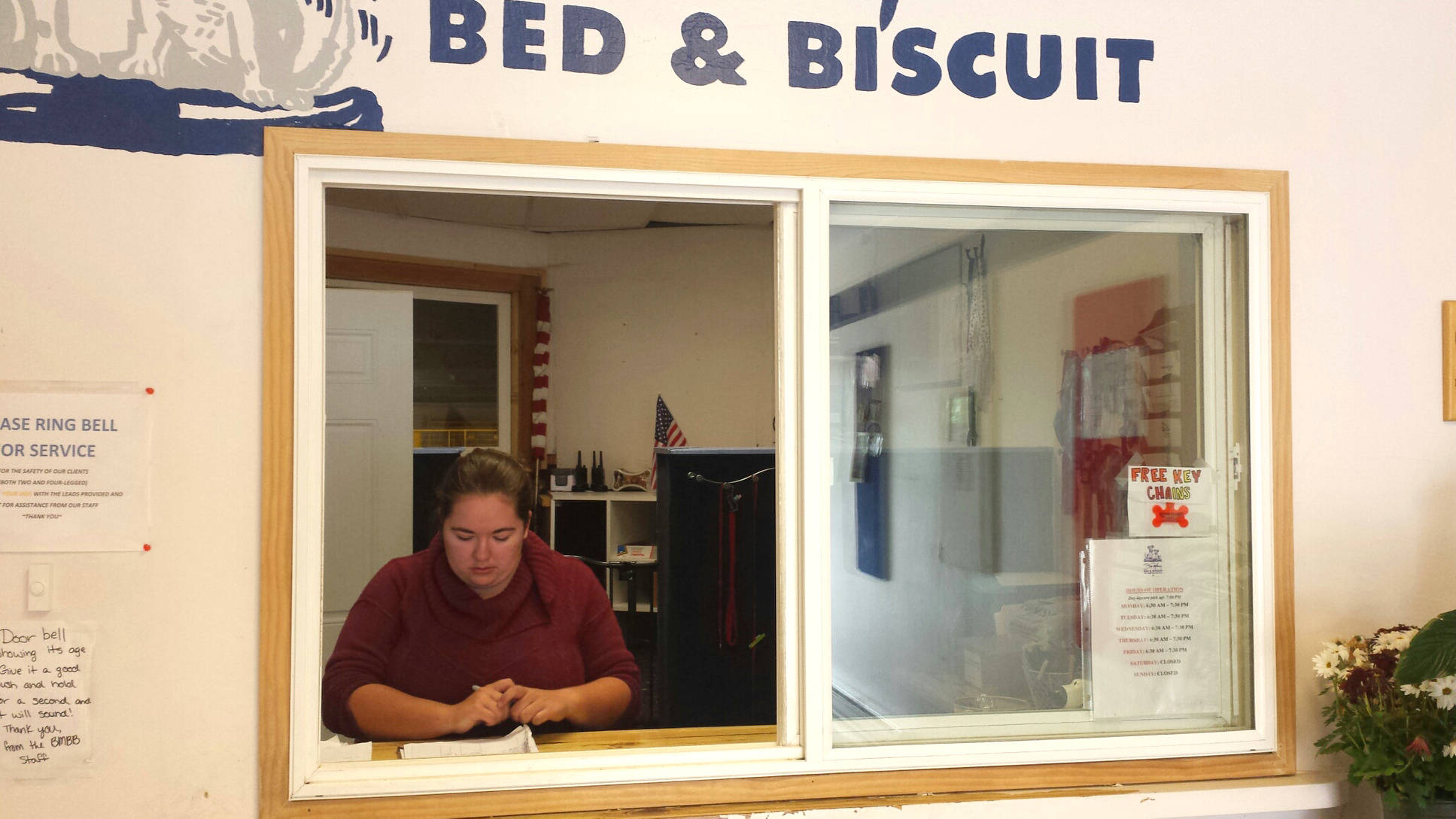Instead of sleeping in and relaxing over summer vacation, Seth Meyer got up at 4 a.m. to learn the art of making bagels.
The Kenai Central High School junior worked part-time at Everything Bagels as part of the Summer Work Program coordinated through Peninsula Community Health Services. One of six students in the program, he and one other student took up jobs at the shop for 160 hours over six weeks, learning how to work the machines that mix bagel dough and interact with customers. There was a learning curve to it, though, he said.
“One day I was really, really tired and I went to make cheese for the bagels, and I got all the ingredients but I forgot to put the mixer in and I was staring at the mixer for like five minutes when it was on and I told (the owner) it wasn’t working,” he said with a laugh.
The four other students had decidedly different work experiences at their workplace, the Blue Moose Bed and Biscuit in Soldotna. The four learned to work with customers and pets at the dog daycare and boarding facility, including cleaning up lots of messes.
Kendra Stevenson, a Connections homeschool student, described her first day as “terrifying,” but by the end she remembered working with Raelynn Passe, a KCHS student, to break up a scuffle between two dogs.
The summer work program springboards off PCHS’s established program through the Alaska Department of Labor’s Division of Vocational Rehabilitation program, which helps people with disabilities train for employment. The students in the summer work program have to be younger than 18, enrolled in a high school and qualify with a disability, which can be anything that is a barrier to employment, said Margaret Mercer, the program coordinator at PCHS. When students have individualized education programming or a 504 plan, it is an automatic qualifier, she said.
“It all started when (the Division of Vocational Rehabiliation) found that their clients that were coming to them had such minimal skills, that they were at a level that it took them a lot of work to get through (vocational) rehab,” she said. “So they decided they were going to start addressing it in a proactive way and reached out to the kids.”
The state pays for the students’ salaries, and the local partner — PCHS on the peninsula — coordinates the employers and details. This summer was the first year for the summer work program on the Kenai Peninsula, and though there are some kinks that have to be ironed out, such as transportation to and from work, the students and employers did very well, Mercer said.
“It’s really interesting to watch them blossom, when they think they can’t do anything,” she said. “… I’m hoping this next year to get a few more employers. It works that way — they learn best when they’re working.”
Part of the goal is to get the participants some relevant work experience they can use to apply for jobs in the future, Mercer said. One of the challenges for kids with disabilities is in the transition between school and the workplace after graduating, she said. On the job, the kids learn the nuts and bolts of working, including the paperwork it takes to apply for a job, such as a background check and drug screening. Importantly, they also learn to advocate for themselves in the workplace.
The kids in the summer work program this year grew a lot over the six weeks Mercer worked with them, she said. Some were even offered part-time employment or assurance that they’d be welcome back next summer, she said.
“We had 100 percent retention with all the kids, and the amazing thing is the difference between those kids over six weeks,” she said.
Stevenson said one of the big things she’ll take away from working at the Blue Moose and Biscuit were the connections she made there.
“For me, it was networking and communication skills. For me, I’m an introvert, so it was ‘How do you work an environment where you’re expected to be an extrovert and be with people all the time, and learn to communicate, be social?’” she said. “It was challenging at first, but you get used to it.”
Reach Elizabeth Earl at elizabeth.earl@peninsulaclarion.com.


